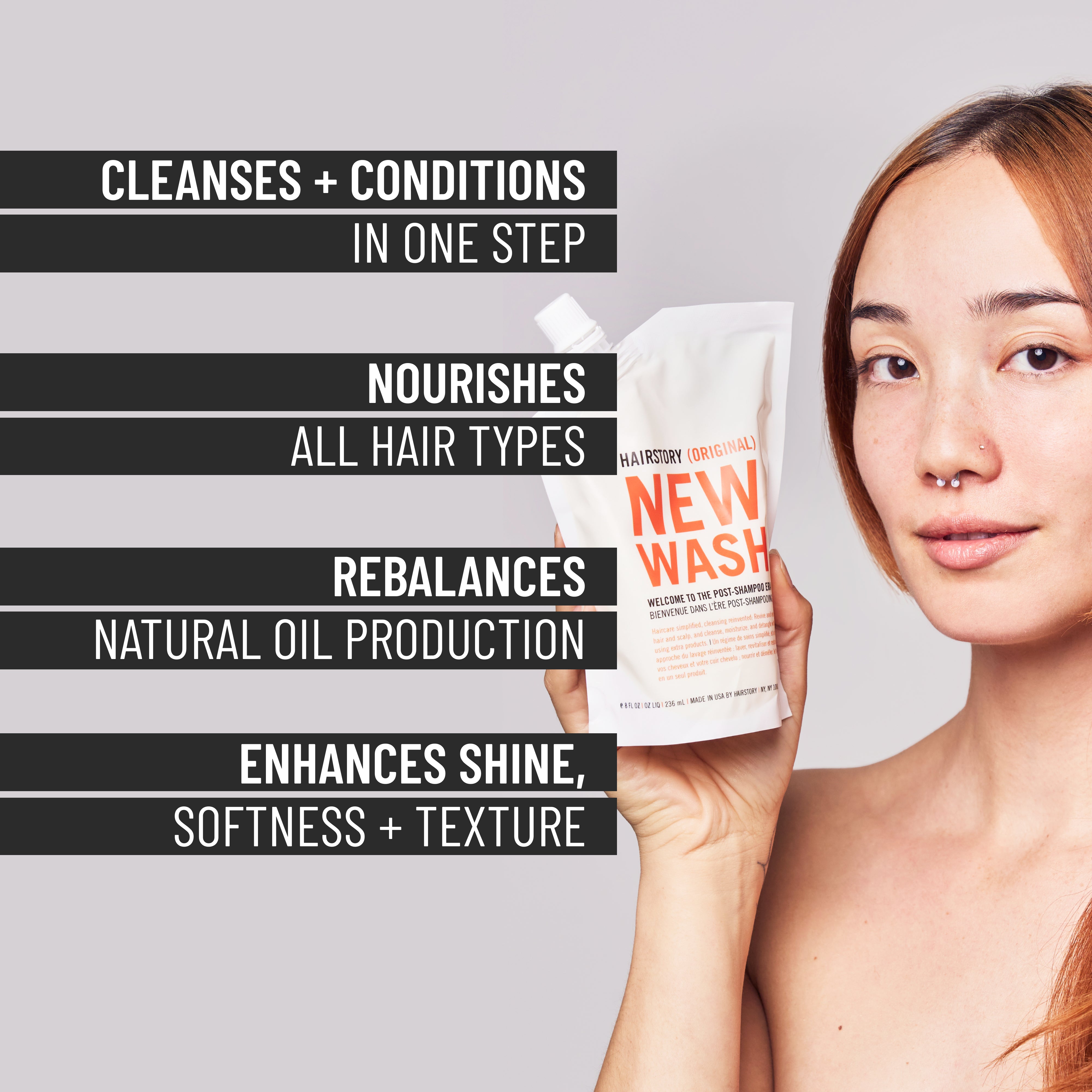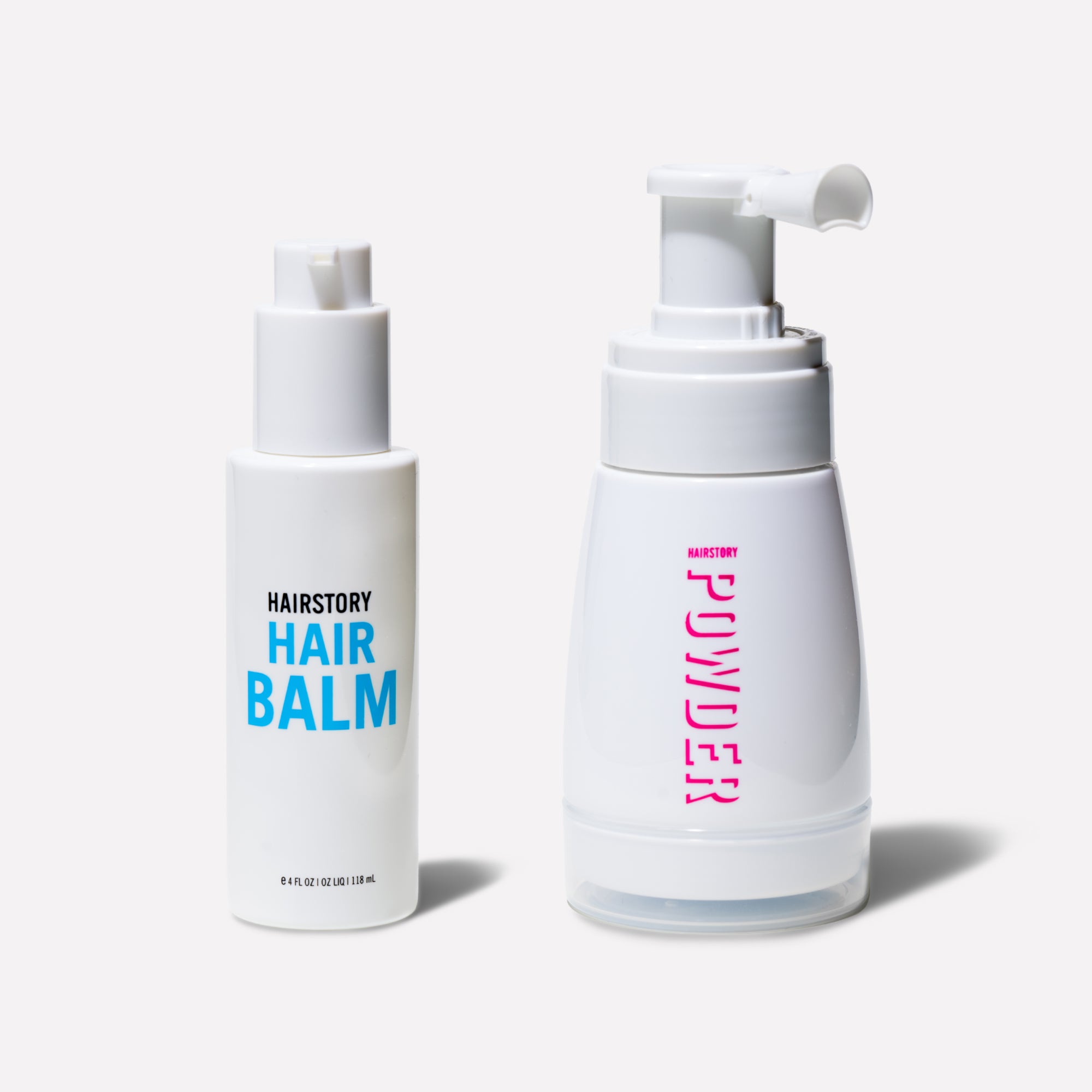It’s a fact of life: Age means changes from head to toe and our hair sends sure signals that time is flying. Graying and thinning – fewer hairs on your head, as well as each hair strand, becoming finer – are unavoidable.
Why Does Hair Growth Slow as You Age?
Does hair grow slower as you age? If so, can you slow the effects of aging on the hair and scalp? To a degree, maybe. Read on for a breakdown of how a great hair care routine paired with the right hair care products can help protect your hair as you age.
Causes of Slower Hair Growth
A single hair strand has a normal life of two to seven years and grows an average of half an inch each month, or about six inches a year. Age, diet, genetics, and overall health determine how fast and how well hair grows.
Our hair growth rate is influenced by our genes, environment, and the products we use. Hereditary traits, endocrine and thyroid disorders, reduced hormonal support, and nutritional deficiencies can all contribute to hair thinning. Some amount of hair shedding is normal; it’s typical to lose 50 to 100 hairs a day.
The hair growth cycle includes a resting phase called a telogen phase. This phase should last approximately three months but certain disorders and illnesses can increase that time. This can keep the hair shaft from growing and entering the anagen phase (or growth phase).
If you are experiencing hair thinning, we recommend choosing healthy hair care products as well as visiting your doctor to ensure your thyroid and endocrine systems are working properly.
At What Age Does Hair Growth Start Slowing?
As we age, cells in the protective outer cuticle become increasingly fragile. Decreased protein and fatty acid levels leave hair weaker, duller, and less elastic and hair breaks more easily when pulled or strained. It can be difficult to maintain long hair as hair thinning takes over if you don’t promote healthy hair growth with the right products!
Common Hair Changes with Age
Graying Hair: Why It Happens
Color changes are one of the first signs that we are getting on in years. Hair follicles produce less of the pigment called melanin as we age, which means that hair starts to appear gray. This typically starts at the temples and extends elsewhere over time. Body and facial hair may also gray, but often at a later stage than scalp hair.
It is a myth that plucking gray hair will cause more hairs to sprout in its place. However, plucking may traumatize the hair follicle and compromise future, healthy hair growth.
Our genes determine when and where we will get gray hair. No nutritional supplement, vitamin, or product will prevent it. Adding color back chemically is the only (temporary) remedy, but that is becoming less popular due to the high-maintenance commitment it requires. Some longtime color-addicts may realize they have no idea what is actually happening naturally under all that color and are surprised to find that it may be far more beautiful than they imagine.
Melanin not only gives hair its color but also makes hair more substantial. Graying then is not merely an absence of color; it also means finer strands and less volume overall.
Thinning Hair: What to Expect
Hair thickness, regardless of color, or the lack of it, also changes over time. Hair is made up of many layers of a protein called keratin and a single strand is normally rooted on your head for 2 to 7 years. Each strand eventually falls out, and new hair follicles grow in. As hair ages, its life cycle is shorter, new growth is typically finer, and many hair follicles stop producing new hairs altogether. Nearly everyone experiences some form of hair loss.
According to Healthline.com, Approximately 25% of men may start to show signs of baldness before they turn 21. 66% of men will experience hair loss by the age of 35, and 85% will have far less hair by the age of 50. As women age, they can develop a similar baldness where the hair thins as the scalp becomes more visible. Menopause is a key player for women in their 50s when sex hormones that stimulate follicle activity are diminished combined with a slight dominance of testosterone.
Take note : Sudden hair loss might be symptomatic of a larger health problem and a visit with your doctor is in order. It could also be an allergic reaction to shampoo or other hair care products.
How to Maintain and Boost Hair Growth
All is not lost, though; there are preventative measures to offset natural changes. Check out these tips on how to increase the rate of hair growth.
1. Wash Less Frequently.
How often you wash hair is dependent on your hair type, but washing too frequently or with harsh detergents can cause hair to become dry and brittle. In fact, we should all shower less to spare the skin, which secretes less of its natural moisture (sebum) as we age. Instead, switch to the gentlest possible cleanser such as New Wash, which contains no detergent whatsoever.
The result of less oiliness may be the need to wash your hair less often. It may seem that more hair collects in the drain when you do, but shedding hair when your scalp is massaged is normal – and more obvious when not done daily.
2. Maintain Moisture.
Don’t bother with conditioner in the shower. A much more effective delivery method is a leave-in conditioner such as Hair Balm that works all day long and can help create some extra volume and take care of frizz and wispy bits. Moisturizing is particularly important for long hair to limit breakage and split ends.
3. Go with the Gray.
Color-treating your tresses is a choice, but it can put extra stress on already fragile hair. If you’re already silver or white, however, it is a perfect canvas for some youthfully rebellious temporary tints. In any case, it’s best to consult a professional before entering the world of color chemistry.
4. Go Natural.
Try to forego daily heat styling with blow dryers, wands, and irons that sap hair of precious moisture and compromise already vulnerable strands; they can’t bounce back from damage as readily as they used to.
If you must heat-style, be sure to apply a heat protectant beforehand to create a barrier between heated tools and hair, and add some moisture to ameliorate any damage.
5. Eat a Complete Diet.
The saying “you are what you eat” is true when it comes to hair. Be sure you’re getting enough nutrients and eating enough in general. Because of a diminished sense of taste and smell, smaller portions become the norm, and many seniors develop nutritional deficiencies.
Hair follicles are made primarily of protein, so make sure you consume enough as a lack of protein is linked to hair loss. The thyroid system also slows down as we age which can result in less efficient storage of iron. If you’re feeling a little tired and think it’s just age, you might be suffering from mild iron storage anemia.
Other nutrient-rich foods that promote healthy hair include:
- Spinach and leafy greens with folate, iron, and vitamins A and C.
- Eggs, which contain biotin, essential for hair protein.
- Fatty fish such as salmon supply omega-3 fatty acids.
- Berries and other fruits contain vitamin C and antioxidants to produce collagen for stronger hair and less fragile skin.
- Avocados are loaded with vitamin E and omega-3 fatty acids to promote hair health.
6. Reduce Stress.
Elevated levels of stress hormones can cause hair loss in addition to natural processes. Manage your stress with meditation or breathing exercises and make sure you get a good night’s rest.
7. Get Moving
Exercise can increase circulation to help your scalp behave younger by stimulating follicles and promoting hair growth – and help keep your whole body healthy as you age. Even gentle exercise does a world of good. A scalp massage after a workout can also create blood circulation and lead to healthy hair growth.
External Factors That Affect Hair Growth
Medications and Hair Growth
Some medicines for conditions such as heart disease or high cholesterol can affect hair. Ask your doctor if what you take interferes with hair growth. When women stop taking hormone replacement medication, a fair amount of hair loss can be expected.
How COVID-19 Can Impact Hair Health
Some survivors are noticing that their hair is falling out during their recovery period.
- Dr. Esther Freeman, director of the Dermatology COVID-19 Registry of 1,000 cases from 38 countries, reports that an increasing number of people recovering from the coronavirus are reporting hair loss in the aftermath.
- Amesh A. Adlja, MD, is a senior scholar at the John Hopkins Center for Health Security in Maryland. She has discussed hair loss in COVID-19 patients and believes it is due to a mechanism called telogen effluvium.
- Physiological stress creates a condition that impacts the growth cycle of hair. Telogen effluvium typically occurs about three months following a stressful event including severe illness, surgery, or major psychological stress, such as the loss of a loved one.
- As people with COVID-19 experience high fevers and other symptoms that can be linked to telogen effluvium, the stress hormone cortisol is released at higher levels during a severe illness, that can also affect hair integrity and hair length.
COVID-19 clearly causes us stress and not just physiological stress. Financial stress, family stress, loss, fear could also lead to hair loss. Typically, telogen effluvium lasts up to six months, and hair will gradually return to normal.















































